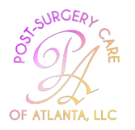
I remembered as a little girl being afraid to rest my feet at the end of the bed because I thought there were rattlesnakes. I would hold my legs so tightly to my chest all night because the fear itself had convinced me the rattlesnakes would bite my feet. It hunted me for many years until I decided to lower my legs to the end of the bed to discover rattlesnakes weren’t there. In my subconscious mind, I pictured snakes moving around and even to the point of hearing their sizzling tongues. My conscious mind saw there weren’t any snakes below the bed. I have given this illustration to show the demonstration of how strong fear has on patients taking narcotics. The fear of becoming an addict has taken precedent over relieving the pain in their body. I have witnessed post-surgical patients refusing to take pain medicines because of the fear of becoming an addict. They instead experienced the obvious excruciating pain than the unknown blissfulness of relief from taking narcotics. The term I am describing is called Opiophobia, which is defined as the fear of taking pain medicines. How did Opiophobia begin? My research stated it started after the Opioid Epidemic campaign was established, which is needed regarding the substance abuse of prescription medicines. (Arnold, 2021). However, the opioid epidemic has cascaded a dark cloud of shame, stereotypical labeling as being weak, and radicalism of philosophy about self-healing from pain without narcotics.
The language against western medicines as a complaint about optimal, safe relief from pain. Question: How can a body heal if it is not in a state of homeostasis? For the body to self-healing appropriately and safely, it needs to be out symptomatic state mentally, emotionally, and physically. Some patients who want to take pain medicines feel marginalized by others who believe the pain medication is a sin. I think Western medicine approach and naturopathic approach is the perfect healing method uses together. The Opioid Epidemic campaign has significantly impacted how narcotics are prescribed and who can access them. Which is very effective to keep prescriptions out of the hands of individuals who need intervention for rehabilitation. On the other hand, one crucial component which is missing, making the campaign focus on teaching the difference in addiction by using drugs for recreational and pleasure-seeking from a therapeutic approach to relieving acute and chronic pain—the danger of focusing on eliminating prescription substance abuse entirety isolate another community group of people who are in need pain medicines. In contrast, their quality of life has crumbled into pieces because of the effect of the opioid epidemic campaign. For instance, individuals who are suffering from acute and chronic pain are not sleeping well or none at all, decreasing appetite, experiencing emotional distress, and having suicidal ideation thoughts (Al-Mahrezi, 2017). Moreover, not enjoying your hobbies that brought them joy, increased consumption of alcoholic beverages to numb the pain sensation, and others (Al-Mahrezi, 2017). How do we make alternative changes to the Opioid Epidemics Campaign, by creating a separate campaign that fits the community suffering from acute pain and chronic pain? #1 Educating our medical providers and staff about pain management will make them feel more comfortable prescribing an adequate number of narcotic medicines. That is the first concern is not prescribing too much to their patients. Ophiophobic happens to doctors and nurses as well, which they want all their patients to heal safely without creating another problem. #2 Encouraging patients to speak up about their concerns about taking pain medicines. Furthermore, encourage the patients to speak up about their family’s view about taking narcotics (Arnold, 2021). Many of the Ophiophobic behaviors begin with those closest to them, which created the good patient syndrome (Arnold, 2021). #3 Re-educating the purpose of narcotics to assist the human body into a homeostasis state. #4 If a pre-surgical patient has a history of substance abuse, we need to find out if the patient is still participating in their sobriety treatments and support group. As well, get permission from the pre-surgical patients to add their sponsor the care treatment to be another support system and accountability partner for “Happier Healing”. The healing can begin and continue the healing process. Using drugs for pain relief has been viewed as rattlesnakes lying at the end of the bed subconsciously in patients’ minds because of fear of being addicted. What I feared has come upon me; what I dreaded has happened to me (English Standard Version Bible, 2001, Job 3:25).
References:
Al-Mahrezi A. (2017). Towards Effective Pain Management: Breaking the Barriers. Oman medical journal, 32(5), 357–358. https://doi.org/10.5001/omj.2017.69
Arnold, R. MD, (2021). Why Patients Do Not Take Their Opioids. Palliative Care: Network of Wisconsin. https://www.mypcnow.org/fast-fact/why-patients-do-not-take-their-opioids/
English Standard Version Bible. (2001). ESV Online. https://esv.literalword.com/

